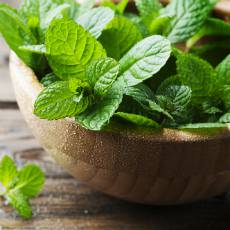What is more satisfying and simpler than snipping off just a few twigs of herbs right in your very own backyard without having to fork out a few bucks per bunch at the market? That would be to enjoy some warm, savory meals with fresh-from-the-earth taste at your dinner table!
It’s about time to plant these popular herbs in your garden and as long as the ground is snow-free, you can have unlimited access to fresh goodness that could always add a little spice and zest to even the simplest of dishes. Here are 7 herbs that don’t require much work to grow.

Chives
These are one of the almost maintenance-free herbs to grow in the garden because they are so prolific in production even with just the tiniest amount of light.
Where to use: You can give salads, mashed potatoes, sandwich spreads, and egg and cheese dishes that delightfully delicate taste with the mild onion flavor of chives.
How to plant: Choose an already-established plant and you’ll have a bunch soon enough ready to be served! Or sow seeds about 12 inches apart and 1/1 inch deep in rows either in spring or fall. To stimulate new growth, cut about one-third of growth off the top.
Mint

Peppermint and spearmint can literally grow like weeds so you have to watch out that it doesn’t choke out other precious herbs in your garden.
Where to use: Garnish cold drinks, brew leaves into tea, or turn into mint sauce or jelly. Sprinkle fresh or dried leaves over lamb before oven-baking.
How to plant: Plant 4- to 6-inch pieces of root or leaf cuttings 12 inches apart and 2 inches deep. It thrives well even in shade but make sure it gets light from time to time. Water well.
Parsley
Parsley is very easy to grow which is why it is one of the most commonly used herbs in the kitchen.
Where to use: Garnish fresh parsley on any meat, fish or onion dishes. Mix its leaves into omelets, soups, salads, stews and casseroles.
How to plant: Soak seeds overnight then plant them 9-10 inches apart. Plant mid-spring if you want them to be available by summer.
Oregano

Greek oregano is the easiest to grow among all its variety. Its robust, woodsy flavor can make any plain recipe a five-star meal that everyone can remember.
Where to use: Sprinkle dried or fresh oregano over any homemade pizza or add liberally when making tomato sauce.
How to plant: This plant acts like a ground cover but does not spread too aggressively. It thrives well under the sun – a good six to eight hours exposure.
Thyme
Whether dried or fresh, thyme is one of the all-time favorite herbs by many homemakers. It gives off a pungent, woodsy flavor to any dish without being too overwhelming.
Where to use: Brew into tea with a little mint and rosemary. Add to soups and stews. Rub into pork, beef, lamb or veal before roasting. Sprinkle over vegetable, fish or cheese dishes.
How to plant: Sow seeds in shallow rows about 1 foot apart. It thrives best on full sun.
Rosemary

The warm, spicy scent of this Mediterranean herb complements many types of dishes, including drinks and desserts.
Where to use: Put whole sprigs of rosemary on top of fish or inside roasting poultry. Add chopped rosemary to soups and stews. Make into tea or enhance the flavor of cold drinks.
How to plant: Since rosemary isn’t too fond of water, you can always plant it on the dry side of your garden. Plant its seedlings in spring, about 2-3 feet apart.
Set out rosemary in spring, planting seedlings 2 to 3 feet apart.
Basil
The culinary versatility of basil has earned it its top spot in the heart of any professional chef or self-made cook. Because of its fragrance, depth and flavor, it can be easily added to practically any dish.
Where to use: It is the basic ingredient for making pesto but you can add it to any fish or meat dish as well as for salads, soups and sauces.
How to plant: Sow seeds near sunny window in early spring then put it in the garden during summertime.













Write a Comment